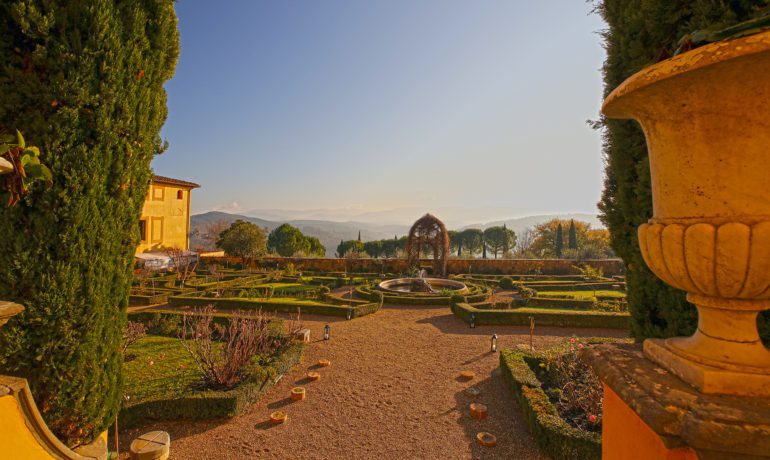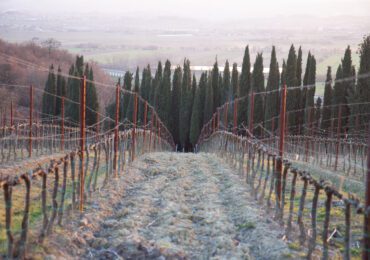We have been visiting wine regions around the world for twenty-one years now. Over that time, we tasted a fair share of Italian wines. Chianti Classico wines are some of our favorite from Tuscany. They are ruby red, with scents of cherries, blackberries, baking spice, and balsamic, with just the right amount of acidity.
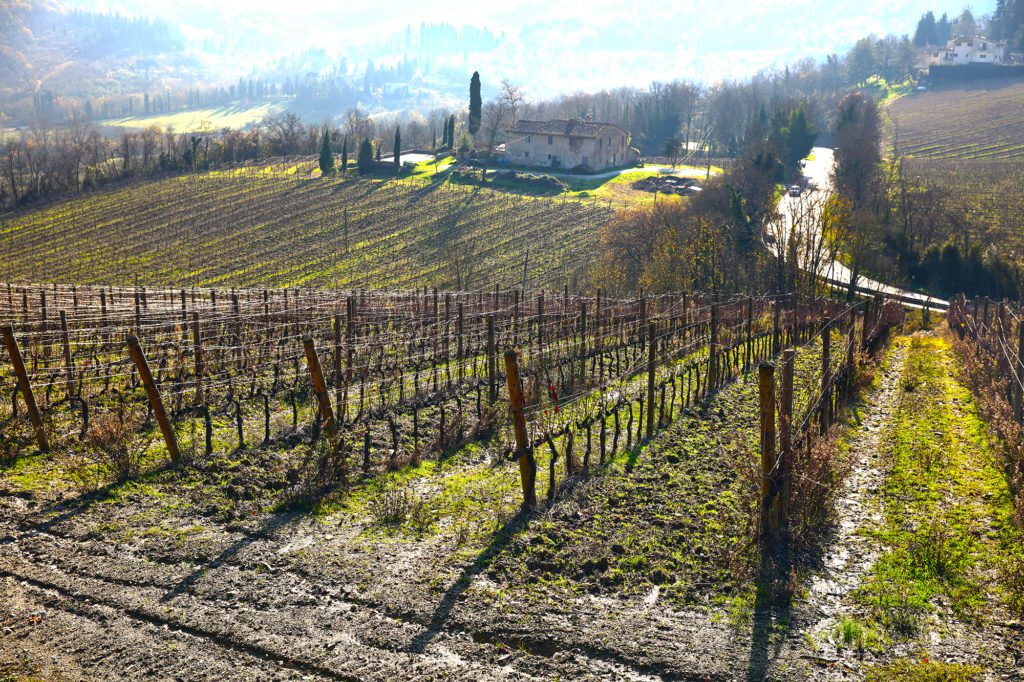
In mid-December 2019, we had the pleasure of visiting the Chianti Classico region for the first time. Thanks to Silvia Fiorentini and Caterina Mori of the Consorzio Vino Chianti Classico, we were given a comprehensive four-day pop-up visit of the region. Our tour started with a bang too! We planned to take a one-hour train ride from Bologna to Florence to meet our host. When we arrived at the Bologna train station, we learned that all trains were delayed for 90 minutes because of an Earthquake that emanated in Northeast Tuscany. This delayed our arrival, but our hosts were eager to accommodate our visit.
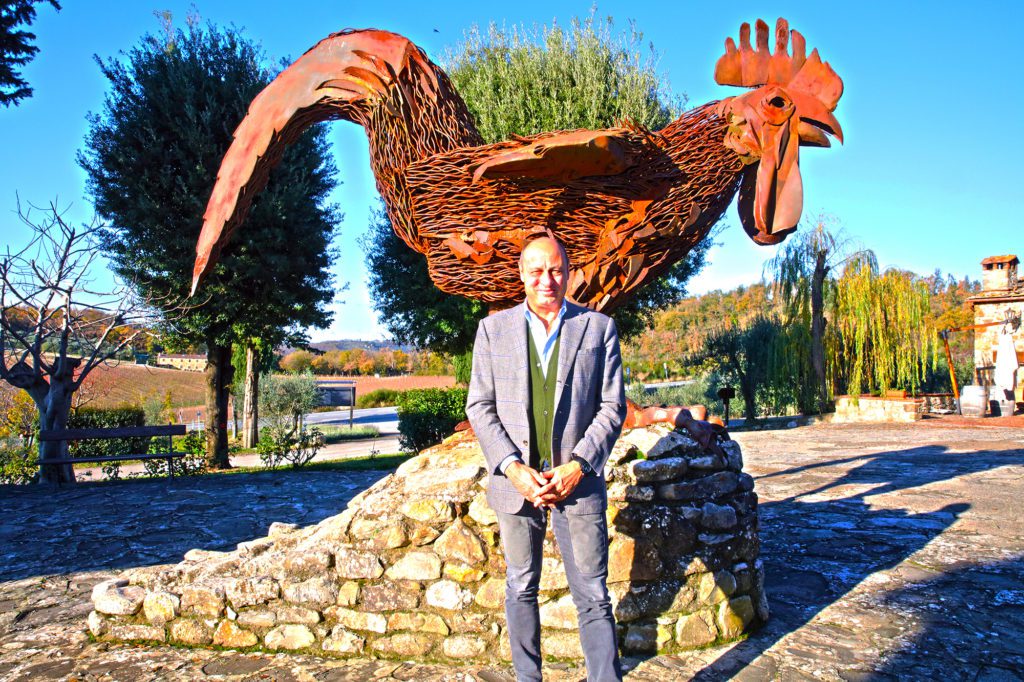
Rocca delle Macìe
We met some old friends and made new friends, discovering exciting history, delicious cuisine and fabulous wines. Chianti Classico should be on every wine lover’s shortlist for visiting. Wineries are conveniently located near Florence and Sienna. You can rent a car and tour yourself or take a professionally guided tour embarking from Florence, San Gimignano, or Sienna. If you choose to visit yourself, you have many options to stay at a Tuscan farmhouse, B&B or Agritourism guest accommodations located on or near a vineyard or olive grove. Many wineries have tasting rooms, enotecas (wine shops) that sell bottles of wine and olive oil and restaurants (seasonally opened) located on their estates. If you have ever dreamed about living a bucolic Tuscan experience someday, Chianti Classico has you covered.
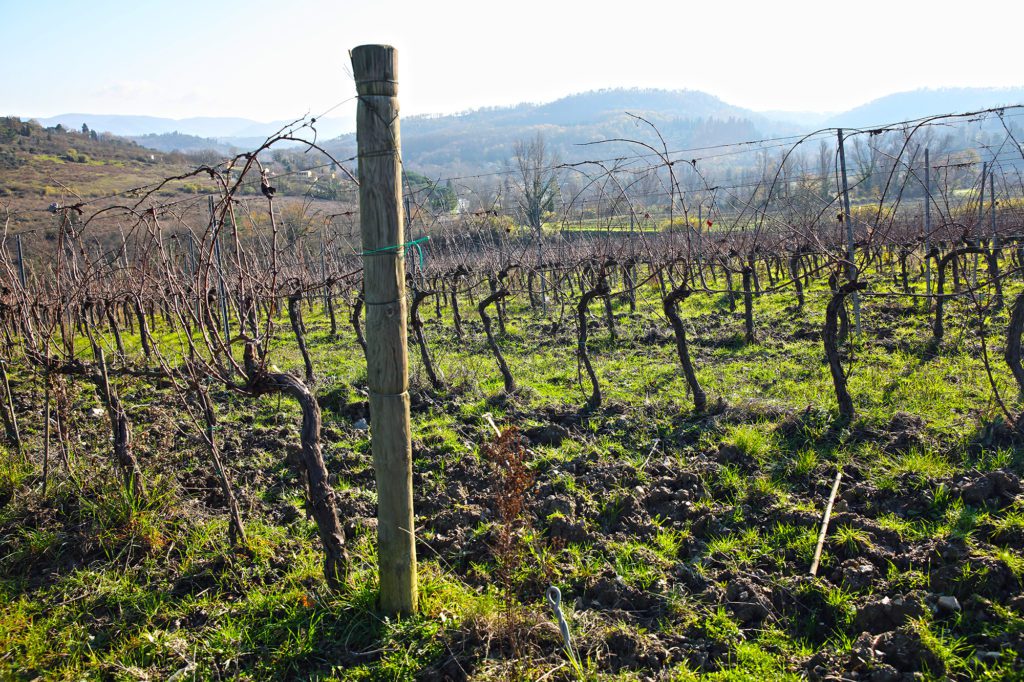
While many things changed globally due to the COVID-19 pandemic, we have stayed in touch with our colleagues in Chianti Classico. The people and their businesses have been terribly impacted, like everywhere else. Since Italy’s primary market for producers has been restaurants, this has been extremely painful as restaurants have been closed since March. Vintners have told me that they are surviving in place, tending to their vines, bottling new releases, and working on plans to reopen safely in stages. Budbreak at Rocca delle Macìe Vineyards began on March 20th, ten days earlier than usual. In April, temperatures rose, and the vines grew steadily, according to Thomas Francioni, Marketing and Communications Manager.
At the time of this writing, vintners are hopeful that they can accept visitors from late June or early July.
Publishers note: We delayed publishing this article because of the pandemic. But recently, we received some good news. It looks like flights to Italy from the US will resume in July. It is now time to consider planning your visit to Chianti Classico!
Chianti vs Chianti Classico?
Sangiovese is Italy’s number one/ most planted grape variety. It is the main grape used to produce Chianti and Chianti Classico wines. Chianti and Chianti Classico are two separate appellations. Chianti must be provided from a minimum of 70% Sangiovese, while Chianti Classico rules are stricter, with a minimum of 80% Sangiovese grapes required. Other red grapes (indigenous or International) varieties may be included (up to 20%).
The Chianti Classico DOCG (Denomination of Controlled and Guaranteed Origin, DOCG), commonly referred to as its production zone, was established in 1716 by Cosimo III de’ Medici, Grand Duke of Tuscany. The Chianti Classico region is positioned in the heart of Tuscany, surrounded by the Chianti region. The total region comprises of 70,000 Hectares/ 172,900 acres.
DOCG rules specify that grapes can only be grown in Florence and Siena provinces and only in the following townships: Barberino Val d’Elsa, Castellina in Chianti, Castelnuovo Berardenga, Gaiole in Chianti, Greve in Chianti, Poggibonsi, Radda in Chianti, San Casciano Val di Pesa and Tavarnelle Val di Pesa.
Chianti Classico’s average wine production tops a whopping 35 to 38 million bottles annually! Top markets include the United States (34%), Italy (23%), Canada (11%) and Germany (8%). The Consorzio Vino Chianti Classico has 510 member businesses, 351 produce and bottle wine.
It is easy to spot a Chianti Classico wine as they all bear the Chianti Classico red circled emblem with the Black Rooster icon. The Gallo Nero (Black Rooster) was the historic symbol of the League of Chianti and has become the symbol of the wines of Chianti Classico.
The argument on whether Chianti Classico wines are superior to Chianti wines is likened to whether Napa wines are better than Sonoma wines. The Sonoma vintners like to joke that Napa makes great auto parts, and Sonoma makes great wine. There are strong opinions on both sides of the tasting table.
The common thread between Chianti and Chianti Classico wines is of exceptional value and quality. You can find excellent price points at all quality levels. What separates Chianti Classico from its Chianti cousin is its precise growing location, the extra details, aging, and steps made in the winemaking process. Chianti Classico is beyond the straw bottom bottles or “fiasco” Chianti wines that are commonly poured at Pizza parlors.
Chianti Classico Quality Levels:
•Chianti Classico Gran Selezione
Estate Grown Grapes Only, A selection/ vineyard block of the estate’s best grapes. Minimum aging requirement: 30 months, including three months of bottle aging.
•Chianti Classico Riserva
Minimum aging 24 months, including three months of bottle aging.
•Chianti Classico Annata (Basic level)
Minimum aging for 12 months.
Top Chianti Classico Producers:
Bindi Sergardi
-Wine tastings and sales by appointment.
http://www.bindisergardi.it/
Fontodi
-Wine tastings and sales by appointment.
http://www.fontodi.com/index.html
Poggio Torselli
-Wine and Olive Oil tastings and sales by appointment.
-Exquisite gardens to view by appointment.
https://www.poggiotorselli.it/en/home-2/
Cinciano
-Wine Tastings and sales by appointment.
-Restaurant on-premise.
-Lodging/ Agritourism guest accommodations on the premise.
https://www.cinciano.it/en/
Rocca delle Macie
-Wine tastings & sales by appointment.
-Restaurant(s) on-premise.
-Lodging/ Agritourism guest accommodations on the premise.
Rocca delle Macìe – Wines & Hospitality in Chianti Classico Area
Antinori Nel in Chianti Classic
-Tastings, Tours & sales by appointment.
-Restaurant on the premise.
https://www.antinori.it/en/tenuta/estates-antinori/antinori-nel-chianti-classico-estate/
For additional information about the Chianti Classico region and all it has to offer, check out this section of the Consorzio Vino Chianti Classico website:
https://www.chianticlassico.com/aziende/?_sft_servizi=vendita-on-line

